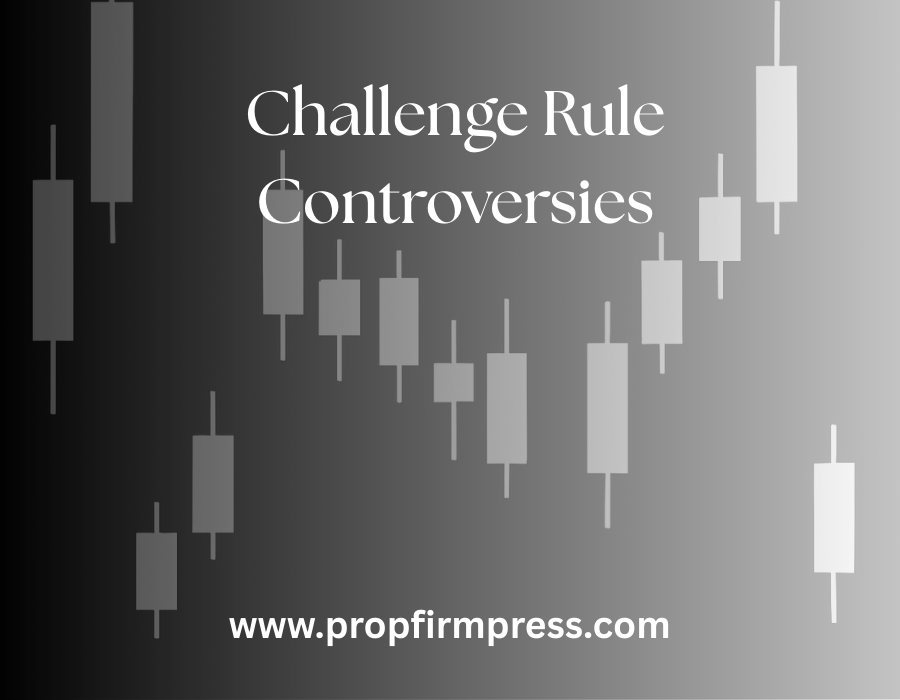Challenge Rule Controversies
Challenge rules have become a fundamental part of many proprietary trading firms’ evaluations. These rules are designed to test a trader’s skill, discipline, and ability to manage risk in a controlled environment. However, over the years, several controversies have arisen regarding these challenge regulations, contributing to confusion and debate within the trading community. Understanding these disputes is key to navigating challenge participation effectively.
Common Disputes Over Profit Targets
Many challenge controversies stem from how profit targets are set and enforced. Some firms set rigid profit targets that are sometimes seen as unrealistic given the short duration of trading challenges. Traders argue these targets do not always align with sound trading principles, forcing excessive risk-taking simply to meet numeric goals. This can lead to trades with high drawdown liabilities or unsustainable performance patterns.
On the other hand, firms defend these strict profit targets as necessary gatekeepers to ensure only consistent and skilled traders progress. The controversy lies in balancing challenge difficulty: too lenient, and firms risk providing capital to underperforming traders; too strict, and legitimate traders may be unfairly penalized.
Drawdown Rules and Their Impact
Another frequent source of dispute involves drawdown limits imposed in trading challenges. These limits can be daily drawdowns, maximum loss thresholds, or scaled drawdowns. Many traders feel that some firms apply overly harsh drawdown conditions, which can be difficult to follow on volatile days or during normal market retracements.
Such tight drawdown restrictions may prevent traders from taking advantage of otherwise profitable setups or adjusting positions in response to market changes. Critics say this leads to a survival-based approach rather than a growth-oriented strategy. Yet, from the firm’s perspective, controlling drawdowns strictly minimizes overall risk exposure and protects capital.
The Role of Challenge Time Limits
Time limits for completing trading challenges also generate significant debate. Some prop firms impose short, stringent timelines, such as four or five trading days, to reach target profits and comply with drawdown rules. Traders argue that such timelines induce unnecessary stress and encourage reckless trading just to meet deadlines.
Longer timelines can allow traders to pace their performance more realistically and demonstrate consistency over time. However, firms claim shorter limits help reduce market exposure during evaluation and quickly filter traders. Finding the appropriate time frame remains a controversial but critical element of challenge design.
Discrepancies in Trade Verification and Reporting
Trade verification is essential to ensure the integrity of challenge results, yet it has been a source of controversy. Traders have reported inconsistencies in how firms verify trade logs, execution screenshots, or third-party platform reports. Some claim that trades get unfairly flagged or disqualified due to technicalities or platform peculiarities.
Disputes may arise from slight time mismatches, order types not supported by the firm’s verification system, or trades executed outside allowed hours. These controversies highlight the importance of clear communication between firms and traders regarding required documentation and accepted evidence.
Restrictions on Trading Styles and Instruments
Challenge rules often specify permitted trading styles and instruments, and this can lead to disagreement. Some firms prohibit scalping, high-frequency trading, or certain asset classes deemed too risky or difficult to monitor. Traders who specialize in these methods or instruments may feel restricted and unfairly excluded.
The rationale from firms is typically rooted in compliance, risk management, and operational feasibility. Nonetheless, the lack of uniformity across firms causes confusion and frustration among traders who must adapt to different rules for each challenge.
Disputes Over Profit Splits and Payouts
Profit sharing terms commonly become a heated topic after challenge completion. Although not always part of challenge rules themselves, disputes arise regarding how profits are calculated, timing of payouts, and any deductions applied. Traders have reported delays in receiving payouts or disagreements over calculation methods.
Some firms employ complex scaling factors or fees that impact earned profits, which can lead to mistrust and dissatisfaction. Transparent and straightforward profit split policies are essential to avoid controversies in this area.
Rule Changes Without Prior Notice
One of the most contentious issues traders face is when prop firms alter challenge rules unexpectedly or midway through a cycle. Traders may invest time and capital to meet certain criteria only to discover changes that affect their eligibility or outcomes. This practice can damage credibility and discourage participation.
Clear communication and advance notice of any modifications to challenge guidelines are critical. Traders also advocate for stable and consistent rules to evaluate performance fairly and build trust with the firm.
Interpretation Ambiguities Leading to Conflicts
Sometimes challenge rules are written in vague or ambiguous language, causing different interpretations by traders and firms. Ambiguities related to order types, time zones, or risk metrics frequently spark disputes during challenge audits or reviews.
Ensuring challenge documentation is explicit and comprehensive can reduce misunderstandings and foster smoother dispute resolution processes. Some firms have incorporated FAQs and detailed examples to mitigate these issues but it remains an area for improvement.
Ways to Navigate and Mitigate Controversies
To avoid falling victim to challenge rule controversies, traders should thoroughly review all guidelines before enrolling. Understanding every rule, asking questions upfront, and documenting correspondences helps create a solid reference point. Traders may also practice using demo accounts or smaller challenges first to familiarize themselves with requirements.
Additionally, selecting prop firms with strong reputations and transparent policies reduces the chance of encountering unfair rule enforcement. Engaging with trader communities and forums provides real-world insights into firm behavior and challenge fairness. Ultimately, due diligence combined with disciplined trading behavior remains the best defense against controversy.
Trading success comes from discipline and review. Unlock your edge with the Trader’s Monthly PnL Tracker.
